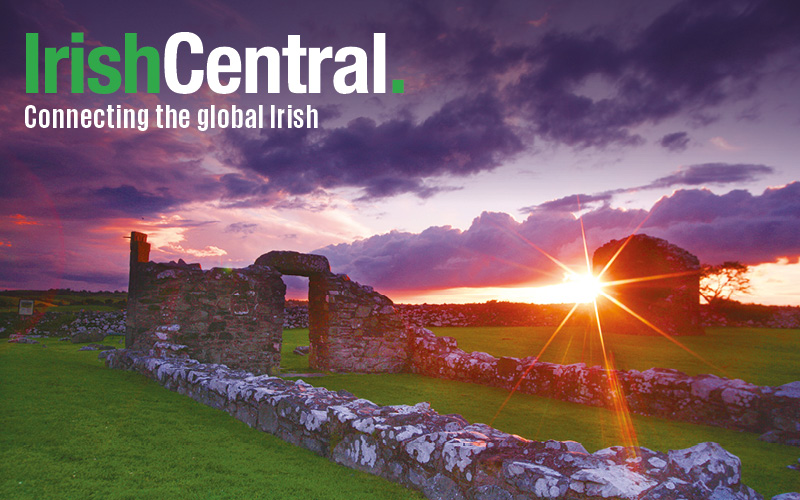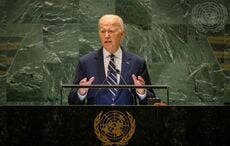A number of 1916 medals belonging to a little known but, as it turns out, very central figure in Irish history, have been donated by a Blackrock resident to the County Museum, Dundalk, County Louth.
Kevin Kavanagh (85) only found out in recent years that his father, Seamus who died in 1969, was recruited by Countess Constance Markievicz in his teens and was a runner in 1916 for her. He also walked routes singing ‘The Soldiers Song’, the Irish national anthem, with its writer Peadar Kearney, assessed Michael Collins army position when he arrived in Dublin in early 1916, avoided execution following the Rising and was the Officer Commanding of the battalion which included Kevin Barry.
Kavanagh, along with County Museum Curator, Brian Walsh, is now encouraging everyone to look in their attic or under the stairs to see if they have any relics of 1916 as the museum starts planning a substantial exhibition in the run-up to and including the centenary of the Easter Rising in 2016.
Kevin decided to put a record of his father’s life together after he received a laptop for his 80th birthday: “We had always known our father was in the army but he rarely spoke about it nor did we know the depth to which he was involved. It was only when we contacted the army barracks for records that all this information came to light.
“We did know he was in the army. There were a number of items in the house which indicated that, including a gun. But it was only a few years ago that we started to piece everything together.
“Apparently, in his early teenage years, Countess Markievicz approached him in a draper’s shop in which he was working. She asked him to change his name from James to Seamus and invited him to come along to a group meeting. This was the beginning of the Fianna Eireann boy scouts movement. One of the other boys was Peadar Kearney and as they would walk routes around Dublin they would sing a song Kearney was writing – The Soldiers Song..”
In the run up to the Easter Rising, records state that Michael Collins, on arrival in Dublin was annoyed when he was placed as a recruit in 2nd Battalion D Company, of which Kevin’s father had command, until he was told regardless of his previous experience he would have to go through the recruits section before it was decided where he should be placed. That decision would be Seamus Kavanagh’s.
In 1916 he joined Countess Markievicz at St Stephens Green and became her personal ‘runner’.
After the Rising had been put down, combatants were arrested and detained. At some point the captives were divided into two lines. Seamus left his line to talk to another man. When spotted he was then ordered by a British soldier to remain in the other line. He, along with the other men in that line were sent to Frongach in Wales. The other line of people who he had originally been with, included a number of the Rising leadership and all were executed.
Rising to the rank of Captain, in 1917, he was OC of ‘H’ Company, 1st Battalion which included in its ranks Kevin Barry, who, in 1920, would become the first republican to be executed by the British since the execution of the 1916 leaders.
Seamus never spoke of his experiences and Kevin realises now there were so many signs of his father’s participation in the Rising that all the family members missed.
“Now, looking back there were little signs there. I can remember going with him and meeting Pearse Beaslai, the TD and author,” Kevin recalls. “I can also remember that our monthly spins in the car would always include a trip to Dunsany Castle. It turns out that Lord Dunsany’s car was requisitioned during the Rising in which Dunsany handed over the car and my father may have been involved.”
On reflection Kevin also remembers his father’s sombre mood around the anniversary of Kevin Barry’s execution on November 1st. “By the 2nd November you could see a big change in him.
“I was named Kevin Barry Michael Kavanagh, obviously after Kevin Barry and Michael Collins and we have a Constance in the family too!”
Kevin has presented his father’s medals to the Museum and hopes to donate other memorabilia which may be in the care of a number of family members.
“My brother had miniature medals but they were taken when his house was burgled. But I’m also checking with other members of the family to see what is in their attics.”
He spoke of his support for the County Museum’s 1916 centenary exhibition which is hoped will launch in September 2014 and build up to Easter 2016.
“I was looking through my father’s medals. They were just sitting in drawers and when I go I know there is no-one who would take a huge interest in them. Also I didn’t want them going to the museums in Dublin, so I contacted Brian Walsh and now they are to be the starting point for this huge 1916 exhibition, which is excellent.”
He is encouraging everyone who has something from that period in history to contact the museum: “If they think about it almost anyone may have a connection to 1916. Have a look in the attic or under the stairs and see what you can find. You could be very surprised. I didn’t know anything about my father until I started looking into it.
“It is fantastic that in the run up to and during 2016 their memories will be kept alive with this exhibition.”
Museum Curator Brian Walsh said he was amazed by Kevin’s father’s life story: “Here is someone who has played a central role in the 1916 rising. He is standing alongside Countess Markievicz, he sang The Soldier’s Song years before it became Amhrán na bhFiann-The National Anthem. He was with the leaders of the 1916 Rising in the GPO and he was OC of Kevin Barry who he named his own son after.
“It’s simply fascinating but similar stories could be held in boxes in attics, sheds and cupboards all over Ireland and beyond.
“A great number of Dundalk and Louth people were involved in The Easter Rising and we would love anyone who has information on these people to share it with us in the Museum for our centenary exhibition,” added Brian Walsh.
Anyone who would like to donate items or share any information they have for the exhibition can contact Brian Walsh, Curator at the County Museum Dundalk at 042 9327056 or e-mail [email protected].
For more information visit www.dundalkmuseum.ie or visit their Facebook page.




Comments